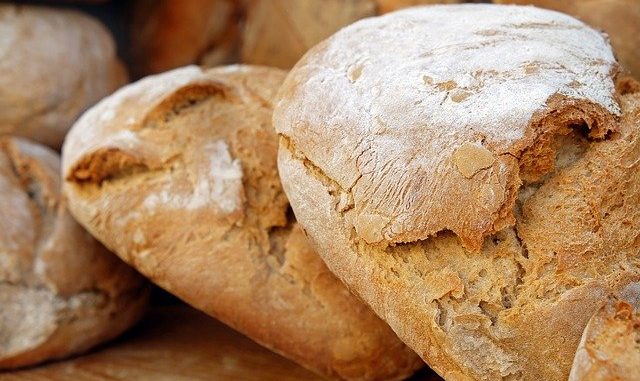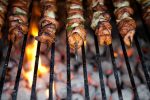
Maillard browning reactions are one those chemical reactions that are fundamental to food manufacture and storage. The reaction is probably the most important taking place in food. It’s also worth stating that it is not just one reaction but a whole complex of interrelated reactions occurring. It can be off-putting to try and unravel the many types of compounds that are being formed and even to model such a system.
Consumers regard browning as an important quality parameter. The reaction is the main basis for why foods turn brown such as baked goods like bread, biscuits and cookies. It also produces colour changes in pasta, sauces and syrups, beverages and so on. It is also the basis for colour and flavour changes during roasting and frying of foods too. The degree of browning of maple syrup is a reliable measure of its quality.
The reaction is also important in defining the nutritional properties of food and may even have some bearing on the safety of the food (Adrian, 1974; Tanaka et al., 1977). One of the most interesting reactions exercising food chemists is the formation of acrylamide which occurs via Maillard browning.
Maillard browning involves a reaction between all amino acids and reducing sugars. Thermal processing is often associated with browning and has considerable impact
The browning reactions have been studied for well over a century. They are part of the class of non-enzymatic reactions because there is an equivalent browning reaction which involves catalysis using enzymes as in enzymatic browning. The principle enzyme here is polyphenol oxidase (PPO). It does not form part of our discussion here but these reactions do need to be kept in mind.
History
From the earliest understanding of cooking it was appreciated that browning was a consequence of this type of food processing. Indeed, it was an indicator that a food had been cooked and a measure of how well done a food was. the French chemist Louis Maillard (1912) first described the reaction.
In the very early 40s there was a concerted effort to separate the reactions that occur due to caramelization and those involving amino acids and sugars.
One of the issues of the 30s and 40s was how to produce colourless sugar syrups. In many cases any contamination produced a darkening and a pale browning of sucrose solutions which was found to involve nitrogen compounds. Only extremely pure sucrose solutions for syrup manufacture could be used (Zerban, 1947).
In 1953, Hodge put all the known information together to develop a map which has been used ever since of the different reactions that compose browning reactions.
A number of large research papers have been written on the subject and it had already been reasonably well-developed as a topic by the time of the early 50s (Ellis, 1959). Reynolds added further material on the reaction in a series of reviews in 1963 and 1965 in the journal ‘Advanced in Food Research’. Far more advanced reviews on the subject are available especially by Harry Nursten from the University of Reading (2005).
Hodge produced a diagram which showed the primary reaction occurring between aldose sugars and amino compounds which tend to be amino acids. This was a condensation reaction that produced N-substituted glycoslyamines.
An Amadori rearrangement can then occur to form what are called Amadori rearrangement products (ARPs). These are usually described as 1-amino-1-deoxy-2-ketose compounds. The Amadori rearrangement was extensively described by Hodge in 1955.
At this point, pH is influential. Above pH 7, the ARPs can form reductones and fission products which may be diacetyl, acetol, pyruvaldehyde and others. If the pH is neutral (pH7) or more acidic, then Schiff’s bases are formed linked to hydroxymethylfurfural (HMF) and furfural. the addition of water hydrolyses these Schiff’s bases with the loss of the amino compound and the production of HMF and furfural.
Complexity of reaction is further increased at this point. A whole series of reactions can occur leading to the formation of aldols and N-free polymers, dehydroreductones, aldimines, ketimes and so on.
Eventually all these complex and polymerise to some extent to form melanoidins which are nitrogen rich polymers.
The Reaction Kinetics
The type of amino acid and reducing sugar affects the rate of Maillard browning reactions. The simplest amino acid, glycine shows the fastest reaction rate of all and invariably involves glucose. In fact the glucose/glycine reactant system is the most widely studied in the field of Maillard browning. Whilst it does not explain the full plethora of reactions it is a useful model system.
Building on Hodge’s general schema regarding reaction products, the reaction between glycine and glucose also gives a relatively series of compounds for investigation. Glucose and glycine when they react together form glycosylamine which then rearranges to 1,2-enaminol to then form an Amadori product and then to form 2,3-enediol.
The product, glycosylamine can undergo a retro-aldol reaction to generate acetic acid and a C4 compound.
The 1,2-enaminol can be deaminated (i.e. lose an amine group) to produce 3DH enol (3-deoxyaldoketose enol) and then 3DH. Both these compounds react further to form various advanced Maillard products
One of the upshots of the system is that glucose reacts more quickly than fructose (Reyes et al., 1982).
The kinetics of browning can simply be measured by monitoring the change in absorbance at 450 nm.
An excess of reducing sugar to amino compounds increases the rate of the browning reactions.
The optimal browning occurs as a pH close to 10 which is relatively alkaline.
Browning is inhibited to a degree by sulphites and is often added to prevent excessive colouration of fruit juices.
Ascorbic acid is a compound which contributes greatly to browning. Its role is still be investigated.
Non-Enzymic Browning In Practice
Orange juice will brown once it has been expressed. This is a particular type of colour deterioration which affects virtually all fruit juices. The phenomenon is worse as the juice is concentrated. Whilst there is a mix of enzymic and non-enzymic browning, it is likely that a number of key flavour compounds are formed because of non-enzymic browning. Two that predominate are furfural and hydroxymethylfurfural (Kanner et al., 1982).
Furfural was found to accumulate in stored juices like orange in the early 60s. Whilst it has little flavour impact it is a compound that matches flavour changes taking place with other compounds in juice. It is used as part of a quality deterioration index.


Great piece for my coursework!